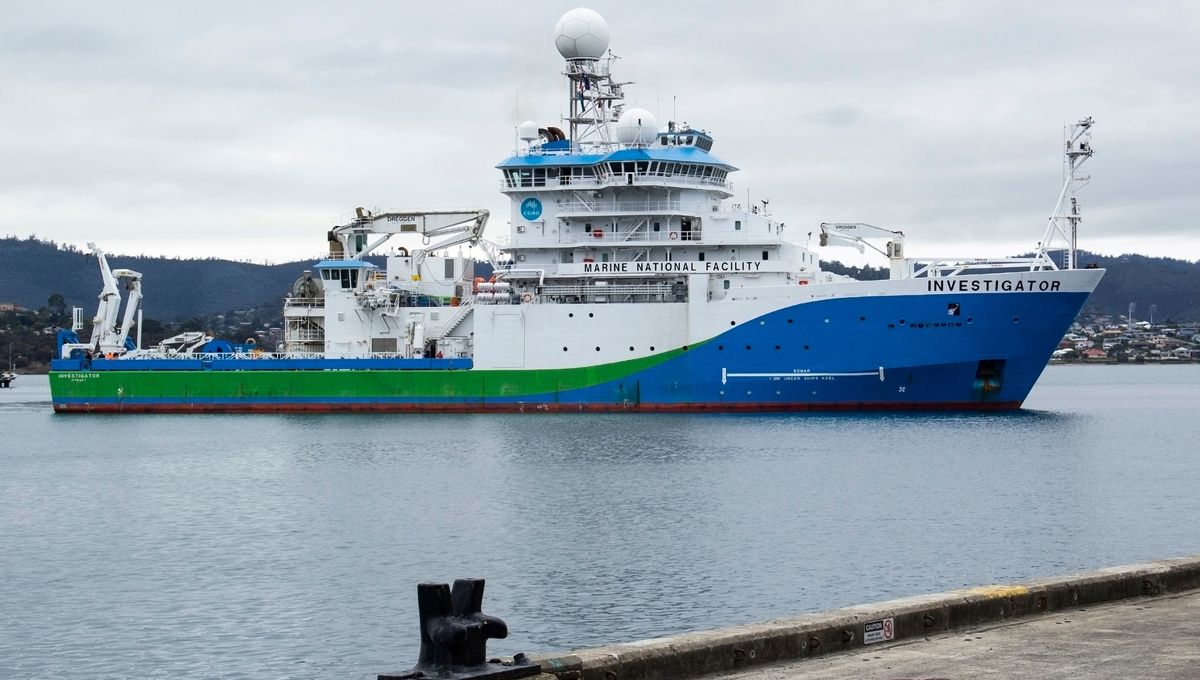
An expedition to survey the hidden depths around Christmas Island and the Cocos (Keeling) Islands has returned with some amazing finds. A team, led by Museums Victoria Research Institute, Australia, set out from Darwin on September 30 for a 35-day voyage on the research vessel (RV) Investigator, operated by the Australian national science agency CSIRO.
As well as using a multibeam echosounder to complete the first high-resolution map of the region’s ocean floor, the expedition aimed to perform an extensive study of biodiversity in the area.
“The great range of research capabilities offered by RV Investigator will again be on show during this voyage with scientific data collected both above and below the waves of the Indian Ocean, from high into the atmosphere all the way down to abyssal depths of more than 5,000 metres [16,404 feet]. These data will be vital for increasing our understanding of this remote and important region of Australia’s ocean territory,” said Toni Moate, Director of the CSIRO Marine National Facility, in a statement.
Dr Tim O’Hara, Chief Scientist and Senior Curator, Marine Invertebrates at Museums Victoria, has suggested that up to a third of the marine species that the team has found may be brand-new to science. As Museums Victoria senior collections manager Dianne Bray told the Australian Broadcasting Corporation, “Life in the deep sea is so poorly known that it really is a lucky dip.”
Judging by some of the dazzling discoveries that have been shared on social media, it looks as though this dip into the unknown has been very lucky indeed. Here are some of the highlights.
First up, we have this adorable walking batfish (look at the little face!). As the name suggests, these guys are not the best swimmers, so they use their fins like limbs to walk along the sea floor.
Upping the super-cute stakes even further is the charming sponge crab.
Talking of crabs, the team found this otherworldly hermit crab using a squidgy coral called a zoanthid as its shell.
And if that wasn’t bizarre enough, take a look at these deep-sea fish that were recovered from 500 m (1,640 feet) below the surface.
It wasn’t all denizens of the deep. The researchers also captured these stunning shots of flying fish.
However, the prize for the most impressive specimen of all may have to go to (drumroll please)… the tripod spiderfish.
Not much is known about these deep-sea dwellers. They use their elongated fin rays to prop themselves up on the ocean floor, simply waiting for the small crustaceans that they feed on to come to them. Sounds like the type of lifestyle we could get behind.
The expedition may have come to an end, but the study of the scientific samples collected is just beginning. As Director and CEO of Museums Victoria Lynley Crosswell said before the team set out, “The research outcomes from this voyage will be invaluable to our understanding of Australia’s deep-sea environments and the impact humans are having on them.”
You can see more finds from this and previous RV Investigator expeditions using the hashtag #rvinvestigator.
Source Link: A Fascinating Array Of Fish Has Been Found By A Deep-Sea Expedition